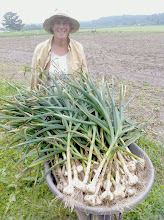Dear Readers,
An important election is coming up and we are barraged by too many ads with throwaway lines and attacks. Most of us are feeling the pinch of the declining economy, which has for many decades funneled wealth to the few in amounts not seen since just before the great depression. We are scared and we are uncertain and this makes us angry. We want to blame someone. There are walls of deception that those controlling the wealth and power have used through out history to shield themselves from attacks and accountability. These walls are composed of the latest minority who can be blamed for our ills. We are turned against each other while the controlling system and those who occupy the seats of power watch the puppet show from a safe distance. Don’t be confused and misled. Historically those in power have blamed ethnic minorities, a certain religious group such as Jews or Catholics, even the Amish. Now we blame our black President, Jews and Muslims, politicians, the poor, gay people, immigrants, or anyone at hand who is different. While it is true that angry, confused people want to harm us, much of the rhetoric is part of the shield for the rich.
The human spirit at its core is generous and kind. We ALL want our children, community and friends to do well and be happy. We want meaningful work and close connections with people. I don’t think the government can provide us those things, but I know they can take them away by confusing and dividing us, by pointing out our differences instead seeing what we have in common. Many of the political ads say that our taxes are too high and that if we could just lower our taxes, life would go better. I would be happy to pay 30% of my income in taxes if I knew that this money went to providing good, preventative health care, building an infrastructure based on renewable energy, supporting our troops to defend against people who are confused about us and making sure our children have a good education and a healthy, safe life and much more. I am able bodied and can work. I am willing to share what I make so that we can all have a shot at a satisfying life. I am not very willing to share when the money goes to fund politicians backed by large greedy corporations, wars that are unjustified or subsidies for wildly profitable oil companies. We have been given the message that if we just buy enough things we will be happy. How is that going for you?
When you are asked to support candidates that say they will protect you from “them”, or “those people” who are to blame for all of the mess, make sure you are not just hearing the echoes from the wall of protection around the rich and powerful. These are knives that cut and divide us. People who do the real work, grow the food and educate our children, care for our elderly and collect our garbage, milk our cows and catch our fish, make our clothes and fix our power lines, process our turkeys and fix our cars, drive our buses and cook our food, make our music, keep our libraries, keep track of our checking accounts, cut our hair, harvest our fields, publish our newspapers and sell us food, these are the people who produce the real wealth and make our community strong. Even the rich, who so desperately cling to their false security just want the same things for their children and the world. They are just so confused and scared that they can’t think. Don’t be confused too.
Sincerely,
Kate Stout













